January 2013: Core Nation Expansions
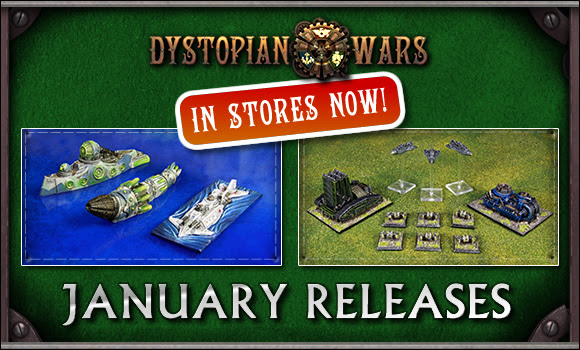
If you recall from part 1, the last round of releases for DW was a series of expansion models for what had by then come to be known as the “core” factions. The core factions included the Britannians, Americans, Prussians, Blazing Sun, French, Russians, and Covenant, and were referred to as core nations in order to distinguish them from the various allied nation forces that started coming out in the second half of 2012. Unlike the core nations, the allied forces tended to be smaller in scope, and did not have a full range of models associated with them. For the expansions that came out in December 2012, the Covenant did not get any new models. However, this was more than rectified with the January 2013 release of a second wave of core nation expansion models, as the Covenant got not one but two new units in it; the Arronax submersible and the Fresnel support cruiser.
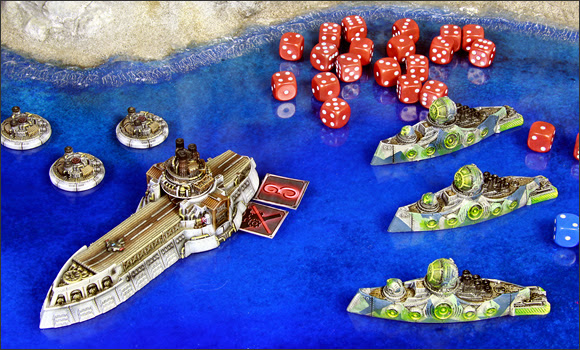
The Americans and Britannians each got a new landship, the Prussians received a new small flyer, the Blazing Sun got a small land walker, and the Russians received a medium sized submarine. All totaled the wave included a total of 7 models, and if you consider it in conjunction with the previous wave it amounted to two new models for each core faction, spread across the naval, land, and air components of the game. Interestingly, while all 7 core nations got new models in these waves, they didn’t receive equivalent models, a practice which hearkened back to the first wave of “specials” back in 2011. As such, the last wave of 2012 and the first wave of 2013 had the effect of enhancing the unique options available to each core faction, helping to differentiate them that much more.
February and March 2013: A New Spin-Off Arrives
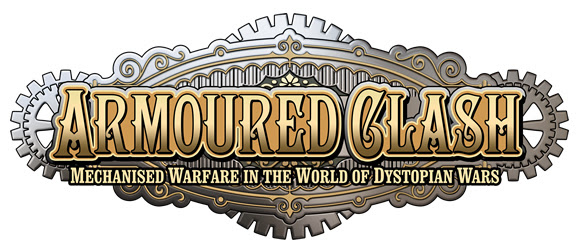
The ground combat side of DW had been a part of the game since mid 2011. However, in terms of available models and other supporting material, it had suffered somewhat in comparison to the air and naval sides of the game for about a year after that. With the arrival of the Storm of Steel campaign book, ground forces for allied nations, and new ground expansion models, that situation started to improve. That momentum really picked up in February 2013 with the launch of Armored Clash (AC), a new spin-off game that used the same ground models as Dystopian Wars but featured different game mechanics and stats. Along with the rules announcement, Spartan also previewed 24 new armored models across all the major factions. The rulebook and stats were available starting in mid February for download, but the first of the new models would not appear until the next month.
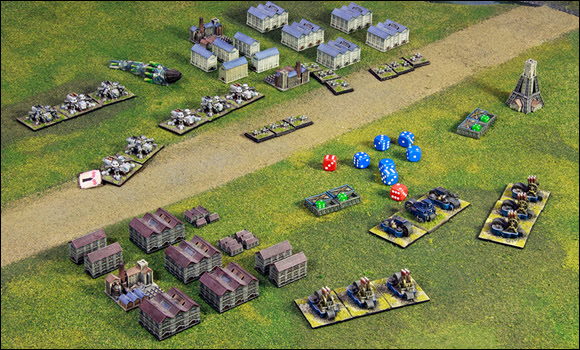
March 2013 saw the release of 10 of the 24 previewed new land units that were teased the month before. These were all sold separately as blisters, and had stats for use both in DW and in AC. All 10 of the models in this wave belonged to the 7 core factions; the Britannians, Covenant, and Blazing Sun all got 2 new tanks, while the remaining 4 core nations received one each. This wave certainly represented the single largest expansion for the ground side of the game since the armored core boxes launched for the first 4 factions way back in 2011! The final item to launch in March was the full retail release of the Invaders, the War of the Worlds inspired “alien” faction that had previously only been available direct-only from Studio Sparta.
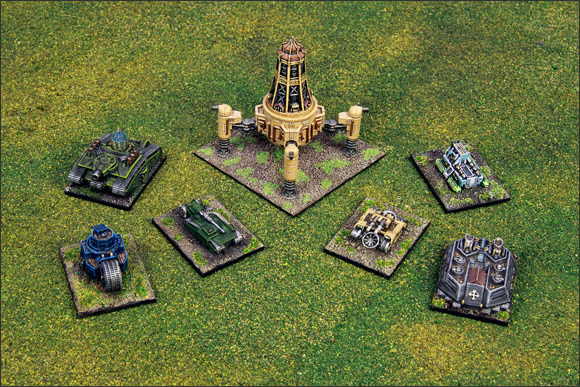
Looking back, it’s easy to appreciate the cleverness of the AC concept. It provided an interesting new way for DW players to use their existing land units, while at the same time providing a springboard for the launch of a host of new models. Making the rules a free download reduced the barrier to entry, which in theory would further entice players to try the new system. However, for whatever reason it seems that AC never quite found its footing among the existing DW fanbase. That would not be apparent for some time yet, however, and there were many more AC releases coming for 2013.
April 2013: A New Faction, New Campaign, and Massive Bundles for Armored Clash
Spartan followed up the land-heavy releases of February and March with even more land units for both AC and DW. First up were another wave of 7 ground units in blisters, which combined with the 10 land units released in March and the three from January brought the total new land model count for 2013 up to 20. In addition to more individual blisters, Spartan also released the Brigade Boxes for each of the 7 core factions. These boxes were designed specifically to support AC, and included around 30 models plus several terrain elements. The models were a mix of the new releases and the original units from the earlier DW ground starter boxes. Overall, the brigade boxes provided enough models for around a dozen individual units in a game of AC, giving aspiring generals a great way to start a new land force or expand one they already had under DW.
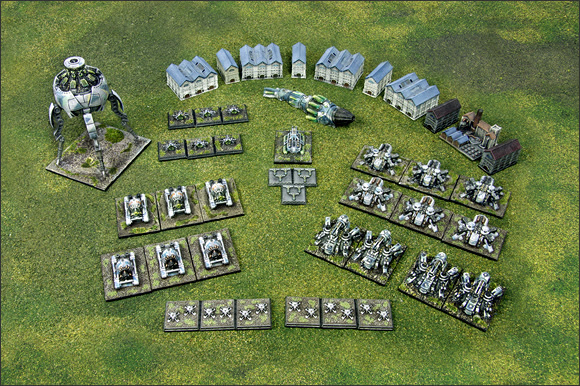
However, the new land warfare products were not the only thing released this month! A brand-new faction, the League of Italian States, was also launched. As an allied faction, they redived a fleet box only. This fleet box roughly matched the contents of the naval starter boxes for the 7 core factions, with a battleship, three cruisers, 10 frigates, two metal medium flyers, and 10 flyer tokens. As an added twist, the Italian box also included 6 torpedo boat tokens, which could be “launched” from the cruisers.
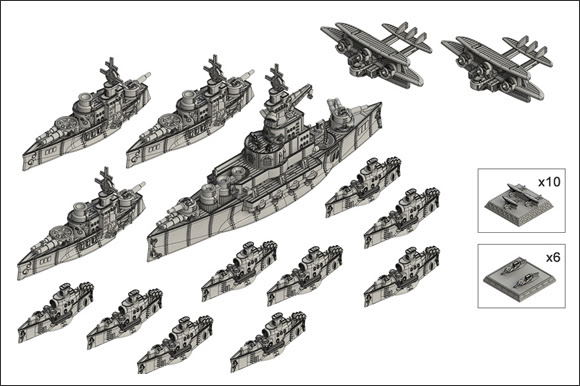
On top of all the new models, Spartan also began releasing the third DW campaign in April. Called Pacific Cyclone, the new campaign focused on events transpiring in the Pacific. Instead of releasing it as a hard-cover book like Hurricane Season and Storm of Steel, the first two DW campaigns, Spartan released Pacific Cyclone as a series of free PDFs from their website.
Over all, April 2013 had a lot to offer for the fans of the DW ground game/AC. The brigade boxes were a fantastic deal, and the 20 new models released since the beginning of the year added a lot of much-needed variety to the land portion of the game. As a small side note, the April releases were actually not shipped until early May. Since Spartan referred to this as the April wave in their newsletter email, I’ve decided to go with it here too. However, it is interesting to note that there was more than a month of gap between the March releases and the “April” ones, which constituted the longest period up to that point without a new DW release.
May 2013: TWO New Factions, and the Beginning of the End for Blisters
May would be an exciting month for DW. While 2013 up to this point had been heavily focused on the land side of the game, May would be much more focused on the bread and butter of the DW fanbase, the naval and air side. Two new allied factions hit the shelves in May. The first up were the Chinese, which got not one but three releases; a naval starter set, a naval “support” set that was focused on carrier support, and a dreadnought-class model. The starter set was fairly conventional for Spartan, in terms of its composition, but the “upgrade” box was a new wrinkle; instead of ships being sold as homgenous model types in a blister, a mix of models was being sold in a single box. As we will see shortly, that would turn out to be a trend. All told, the Chinese launched with 10 different models for the faction, easily making it the most fleshed-out of the allied factions at the time. The designs for the ships were a dramatic departure from other factions, featuring “junk” styling and featuring ornate pagoda-like superstructures.
The second major faction release for 2013 was the Australians. In the DW timeline, we learned that the Australian continent had split over its loyalties to the Britannian crown. The loyalists continued to receive support from the Kingdom, while the rebels were forced to seek support from the Covenant. As such, Australian ships could equip a number of different options depending on their allegiance, and those were included in the Australian box. The make-up of the box also broke from the traditional 1 battleship-3 cruiser-10 frigate split that Spartan had used up until this point. Instead, the Australian starter box contained 2 battleships, 2 “submarine tenders,” 3 monitors, 8 frigates, and 8 mini-sub tokens to go with the tenders. This unusual force mix, along with what are, in my opinion, rather fetching designs, made the Australians quite popular. Noticeably absent was any organic air support; it was assumed that players would ally in air units from the Britannian or Covenant forces for support as required.
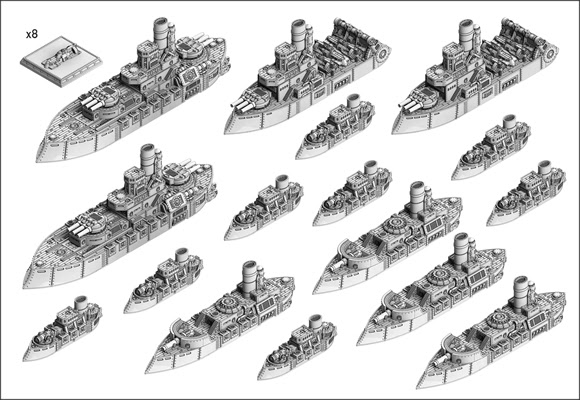
The last new releases for May 2013 were yet 3 more land units; a new tank for the Russians, and small walkers for the Americans and the Covenant. These three releases now made it a total of 23 for 2013, and also meant that Spartan had now released 20 of the 24 new ground units they had previewed back in February. Interestingly, these three new releases were not a part of the Armored Brigade boxes that were launched the month before.
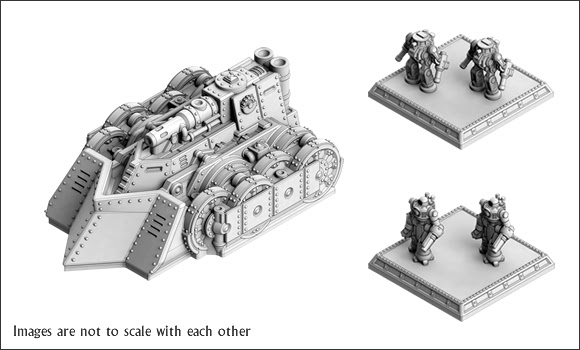
In addition to the Chinese, Australian, and ground units, May also saw the release of the first wave of re-packaged unit boxes. After 2 and half years of following a model of starter boxes plus blisters that contained one type of upgrade unit, the range for DW had grown quite large and now included many, many individual items that were all identified by their own Stock Keeping Unit, or SKU. This large number of SKUs was becoming difficult for retailers and distributors to keep track of, and it prompted Spartan to change their model to one that did away with blisters entirely. Instead, models of multiple types would be packaged together and sold as a set. In addition to benefiting Spartan, distributors, and retailers by reducing the number of SKUs, this change in practice would also help Spartan by reducing packaging costs and benefit players by eliminating an old problem that had been with the game since the beginning; what I call the Hot Dog problem. For those of you who are not aware, there is an old joke in America about how Hot Dogs are sold in packages of 10, while Hot Dog Buns are sold in packages of 8 (meaning there are two extra dogs that are left bun-less). In the case of DW, many blisters contained a quantity of models that was either greater or (more typically) less than their full squadron strength. This left players with either “orphaned” extra models or with the need to buy more than one blister of a particular model to fill out their squadrons. Of course, buying two blisters to get one full squadron then often led to more orphan models…it was a bit of a mess! Under the new box set model, all of the models that were included in a given box were included in quantities that matched their maximum squadron sizes, which eliminated this problem.
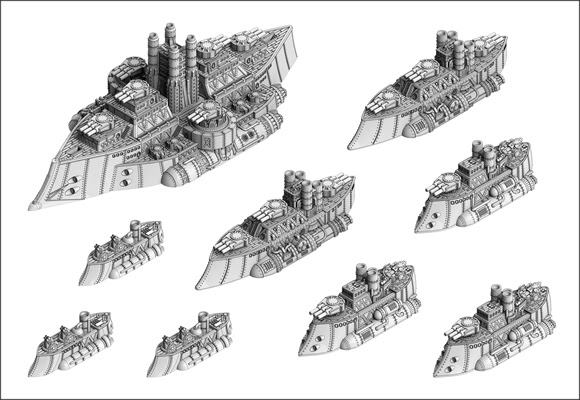
The first boxes to come out were for the Britannians and the French, and were given titles that suggested a general theme or role on the table, such as the “Battle Flotilla” or “Support Group.” While the transition away from blisters would take quite some time, May 2013 marked the start of that process for Spartan.
June 2013: Ottomans and more Box Sets
Hot on the heels of the Chinese and Australians, Spartan released yet another new faction in June with the Ottoman Empire. In keeping with Spartan’s revised method of not selling blisters, the Ottomans launched with two box sets; a Naval Battle Group and a Naval Support Group. It is fair to say that over time Spartan had been gradually improving the level of detail and complexity in their miniatures. However, when I first saw them my immediate thought was that the Ottomans were the most intricate designs Spartan had come up with to date. While I’m not a huge fan of their aesthetic, there is no doubting that the models were quite nicely executed.
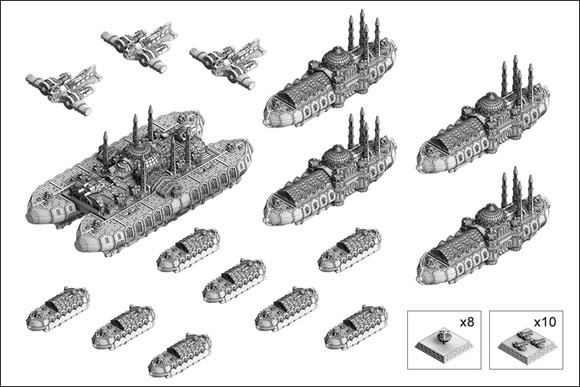
In addition to the two Ottoman boxes, June also saw the continued roll-out of the repackaged box sets as part of the blister elimination plan. This month’s box sets were for the Prussians and Blazing Sun, and covered land, sea, and air models. All totaled, this wave included 13 new box sets for the game, although as with the boxes released for the French and British in May these sets had no new models in them, and were instead only re-packs of existing sculpts.
July 2013
After a rip-roaring first half, the DW releases for July were a bit muted in comparison. The Ottomans received a mobile airfield that, while primarily intended as a land unit, was also fully amphibious and so could be fielded in a naval list as well. Per the July 2013 email news letter, this model was originally intended to be only the first of a full range of Ottoman land units. Sadly, the Ottoman land forces never materialized.
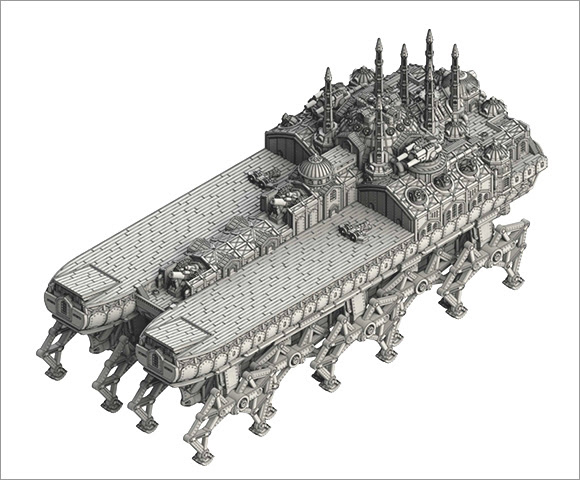
Also in July, a further 13 re-packaged box sets for the core factions were released, this time for the Americans and the Covenant. Like the boxes released in June, these boxes ran the gamut of land, sea, and air forces. Likewise, these sets offered no new models, but were simply new combinations of existing units in a newer, friendlier package.
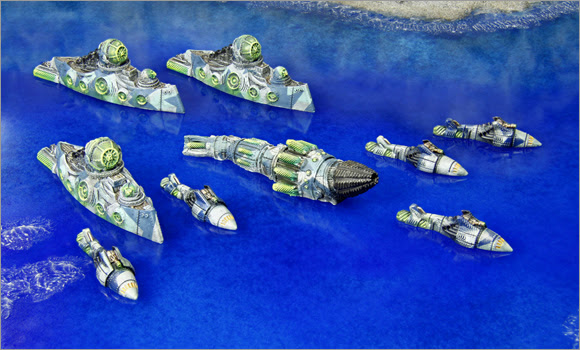
August 2013: Core Nation Upgrades, and Campaign #4
While there had been quite a few new releases for DW thus far over the course of 2013, for those core faction players that were mostly focused on the naval and air side of DW there had been precious little in the way of new releases for the better part of a year (other than the re-packaged box sets). Spartan began to rectify that situation in August 2013, however, by releasing new models for the British, Prussians, Americans, and Blazing Sun. Each of these boxes included new sculpts, totaled around 7-9 models, and had their own thematic focus. The American box was all air power, while the Prussians included new support cruisers, small flyers, and the epic Sturmbringer large submarine.
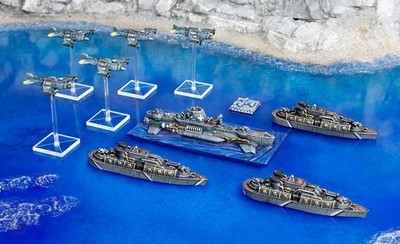
In addition to these 4 new offerings, Spartan also continued the roll-out of its repackaging of older models into box sets. This month, it was the Russian Coalition’s turn, with 6 different sets to accommodate their existing line. Rounding out the releases for August was the 4th campaign book, Operation Sirocco. This book depicted battles among the major powers for control of North Africa. In addition to the usual wealth of background information, scenarios, and the like, Operation Sirocco also included the Armored Clash core rules in print for the first time. Previously, AC had been available only as PDFs from the Spartan website.
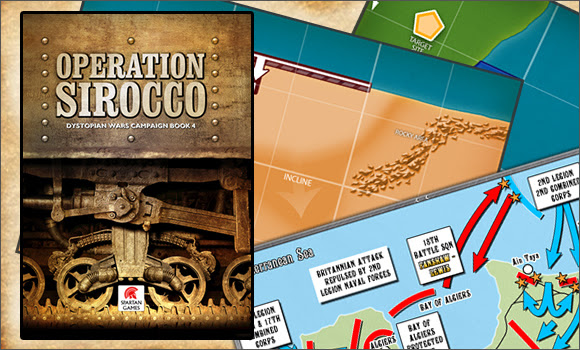
September 2013: More New Models for the Core Nations
Spartan rounded out the new support boxes for the 7 core factions with releases for the Covenant, French, and Russians this month. As with the first 4 support boxes, these 3 were all naval/air focused and featured new sculpts for each faction. Looking at all 7 of these boxes in their totality, it is interesting to see how far Spartan had come in terms of model detail and intricacy since the initial releases for these factions. In some cases, the older sculpts looked quite plain next to their newer counterparts. Still, there was enough of a through-line in their designs that they still worked together on the table, and in any event core nation players could hardly complain as the new models were quite lovely and, as mentioned, were the first naval/air releases after a considerable drought.
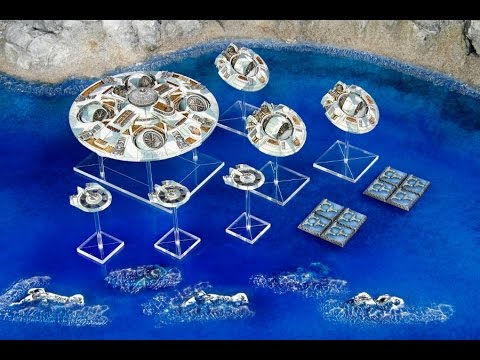
October 2013: Mercenaries and Merchants
After having spent the last two months giving the 7 core nations some much needed attention, Spartan turned to expanding the game once again in October. The first major release was another new faction, the East India Merchant Company. As a mercenary faction, the EIMC could be added to most fleets, and was an interesting fleet box to boot. Featuring a large air ship, a pocket battleship, three cruisers, and 8 frigates, the EIMC were comparable in scope to the other mercenaries and allies that had been released up to that point in 2013.
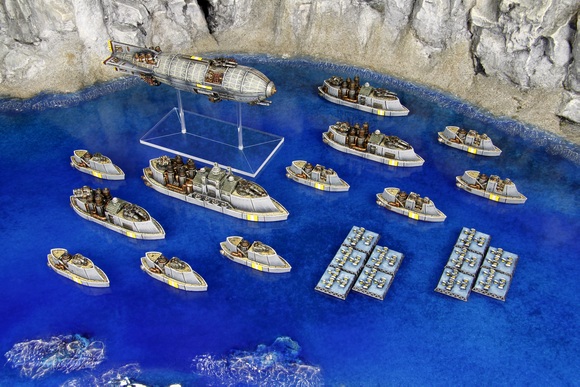
Also in October, Spartan released a new Merchant Fleet box. This added more merchant ship sculpts to the game for the first time since the Olympic transport was released a year and a half before (one of which was included in the box). I found this release to be quite interesting, as merchant ships are great world-building items and scenario pieces. The set was quite impressive, including and Olympic transport, multiple merchants with configurable deck loads, an escort carrier, and three pieces of “oil rig” terrain. Rounding out the releases for October were new box sets that repackaged the previously released landing craft and a number of the building models.
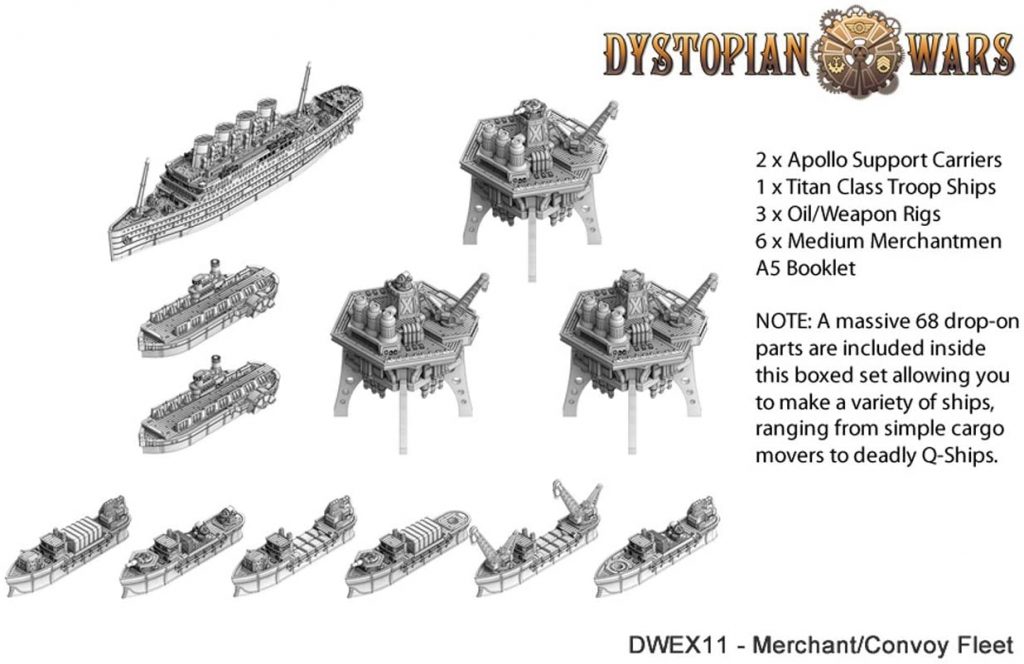
November 2013: Ally Expansions and New Scenery
Spartan put out 4 major releases for DW in November. First up was a naval battle group for the Danish, and an aerial group for the Polish-Lithuanian Commonwealth. These two box sets featured all new sculpts, and had some distinctive models in them. As with the other box sets that had been released for minor factions in 2013, these two boxes contained enough models to field a legal force in their own right, as they contained small, medium, and large models. These two sets were a much-needed fleshing out of the Danish and PLC forces, which hadn’t seen a release since their initial offerings a year prior.
Rounding out the releases for the month of November were two terrain sets. One was a set that enabled players to create their own port complex, which was perfect for use with the merchant box released the month before. The other box contained everything needed to model a small airfield. Both of these boxes contained a wealth of new sculpts, though it is worth noting that several of the sculpts in the airfield box, while new, were subtle re-workings of similar models that Spartan had released in 2011. These two box sets were quite useful, as they were essentially complete scenes in a box. A player had everything they needed to build an impressive centerpiece for their table out of one. As it turned out, these would be the final DW releases for 2013. Spartan’s releases for December were monopolized by the relaunch of a little game called Firestorm Armada. In keeping with the new no-blister mantra, Spartan essentially re-launched the entire line for Firestorm Armada, with new sculpts and new fleet boxes (dubbed Patrol Fleets) to boot. I mention it here as we saw some interesting parallels with Dystopian Wars in the following year. Speaking of which, on to 2014!


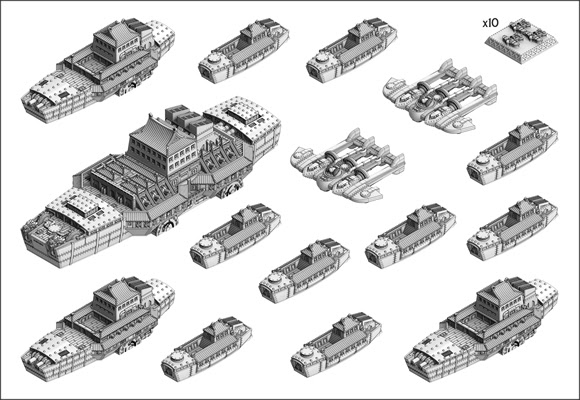
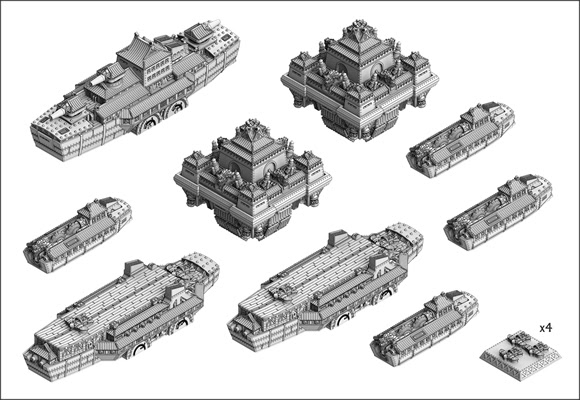
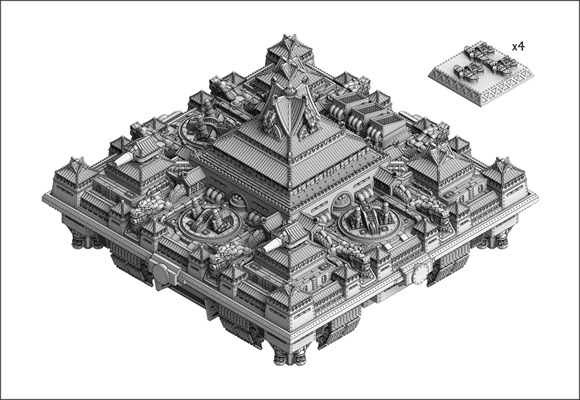

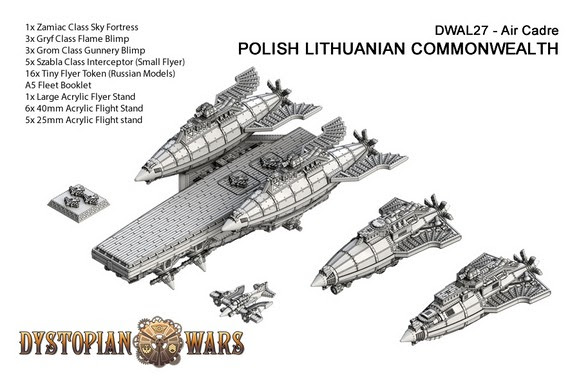
It’s quite remarkable just how many different models they were putting out. New releases are great, but you are correct in that it becomes a bit disappointing when your favorite faction doesn’t get something new and shiny. It collapses under its own weight.
Pingback: Dystopian Wars: A Brief History (Part 3) | Man Battlestations Blog